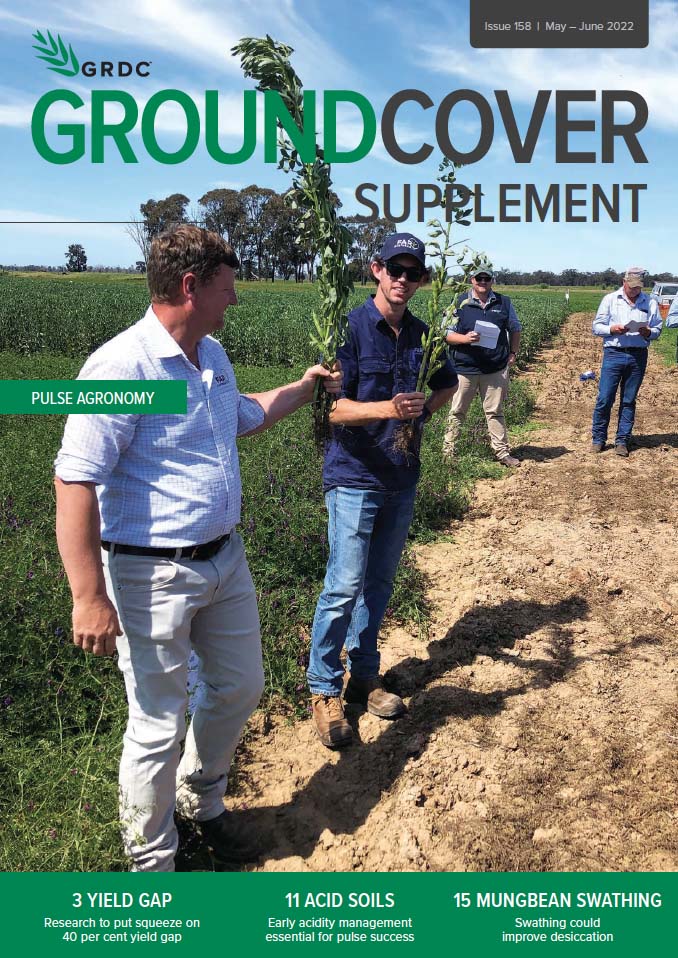This page shows the articles in of GroundCover.
GroundCover is also distributed every two months via mail. If you would like to subscribe to receive the hardcopy magazine, visit our subscription page.
Download supplement-

Extending high-value pulses to WA
Supplement: Pulse Agronomy, May-June 2022 - 05 05 2022While Western Australia produces the lion’s share of Australia’s lupins, its share of the high-value pulses – chickpeas, faba beans and lentils – is low. Demonstration trials have raised awareness and helped growers to evaluate opportunities to improve agronomy and optimise yield.
-

Irrigated faba beans break the 7t barrier
Supplement: Pulse Agronomy, May-June 2022 - 03 05 2022Irrigation provides the opportunity to produce hyper- yielding crops, with faba bean crops already exceeding seven tonnes per hectare. But higher biomass can be risky for disease and lodging, demonstrating the need to carefully manage these intensely grown crops.
-

Soil amelioration a ‘little ripper’ for Mallee pulses
Supplement: Pulse Agronomy, May-June 2022 - 02 05 2022Deep ripping has dramatically improved grain yield and gross margins of chickpeas, faba beans, lentils, field peas and vetch in the deep sands of the Mallee in Victoria and South Australia. Ripping reduced the financial risk of growing pulses by reducing the risk of a negative gross margin.
-

Perfect match needed to reduce lentil drought risk
Supplement: Pulse Agronomy, May-June 2022 - 30 04 2022The increasing prevalence of drought conditions in Victoria has reduced the yield of lentils over the past two decades. Standing stubble played a greater role in improving plant-available water and lentil yield in the field than row spacing.
-

Fit-for-purpose research targets pulse profitability
Supplement: Pulse Agronomy, May-June 2022 - 28 04 2022A maturing pulse agronomy program aspires to shift pulses from risky to rewarding to increase the area and productivity of pulses in the cropping system. New investments are targeting local research and extension needs in New South Wales, Victoria, South Australia and Western Australia.
-

Research to put squeeze on 40 per cent yield gap
Supplement: Pulse Agronomy, May-June 2022 - 26 04 2022With an estimated yield gap of about 40 per cent, there is plenty of room for improving pulse variety selection and management. A new investment aims to improve the water-limited yield gap of chickpeas, lentils, faba beans and narrow-leafed lupins across Australia.
-

Pushing pulses from break crop to bank crop
Supplement: Pulse Agronomy, May-June 2022 - 24 04 2022GRDC’s pulse investment is focused on reducing production risk in existing regions and expanding the area where pulses can be grown reliably. Reliability varies depending on soil types and climate. The risk of poor productivity can still outweigh the potential reward.


























































